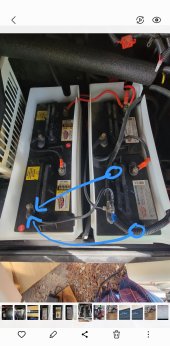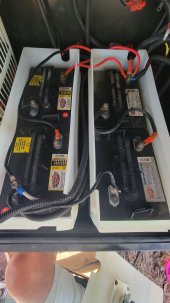I bought my 2017 Bighorn RV and it came with the following batteries and solar listed further below. I am trying to determine what the system is capable of and the condition of the batteries.
The lead acid flooded batteries are from 2017 so 6 years old. Is there a way to check how much life is left to determine if they are due for replacement? Also, would AGM 200ah be a good upgrade? How do I determine if I really need 4 x 200ah batteries with a 2000W inverter? How do I determine how long it would take to recharge the batteries with the two solar panels? I imagine there are some equations that I need to answer these questions.
We are planning a cross country trip so will have 5 to 7 days on the road not plugging into shore power. We will be sleeping overnight on the road and will need some power for lights, microwave, coffee pot. I am guessing running an AC unit is not possible.
Thanks!
1) GoPower GP-SW2000 2000W inverter
2) 2 Solar Monocrystalline panels 160W each (9.14A max current)
3) 4 6v Batteries - lead acid flood 200ah each - 105min @ 75 amps 210 Ah @ 20 Hr
4) GoPower GP-PWM-30-UL 30A PWM solar controller
5) GoPower GP-SWR-B Pure Sine wave inverter remote
6) Intelli-Power PD-9280 AC to DC converter
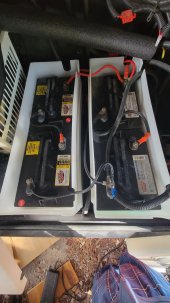

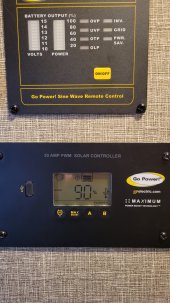
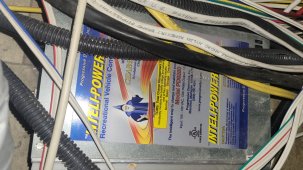
The lead acid flooded batteries are from 2017 so 6 years old. Is there a way to check how much life is left to determine if they are due for replacement? Also, would AGM 200ah be a good upgrade? How do I determine if I really need 4 x 200ah batteries with a 2000W inverter? How do I determine how long it would take to recharge the batteries with the two solar panels? I imagine there are some equations that I need to answer these questions.
We are planning a cross country trip so will have 5 to 7 days on the road not plugging into shore power. We will be sleeping overnight on the road and will need some power for lights, microwave, coffee pot. I am guessing running an AC unit is not possible.
Thanks!
1) GoPower GP-SW2000 2000W inverter
2) 2 Solar Monocrystalline panels 160W each (9.14A max current)
3) 4 6v Batteries - lead acid flood 200ah each - 105min @ 75 amps 210 Ah @ 20 Hr
4) GoPower GP-PWM-30-UL 30A PWM solar controller
5) GoPower GP-SWR-B Pure Sine wave inverter remote
6) Intelli-Power PD-9280 AC to DC converter




Last edited:




